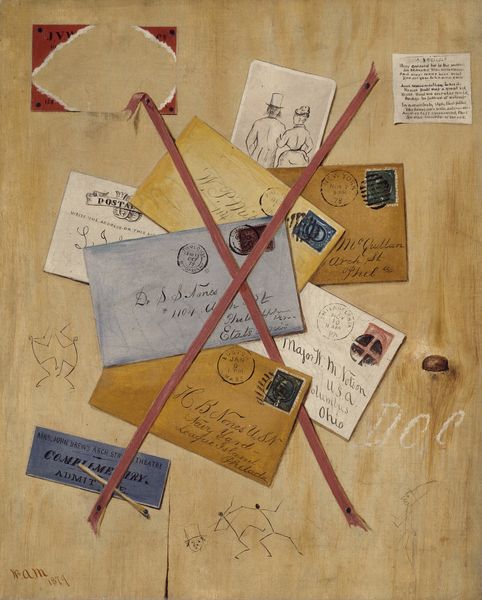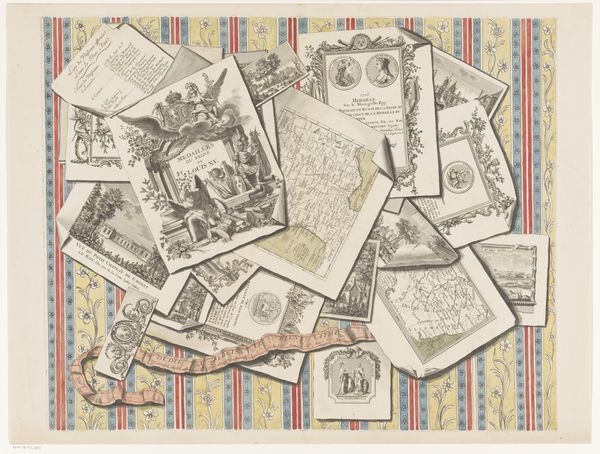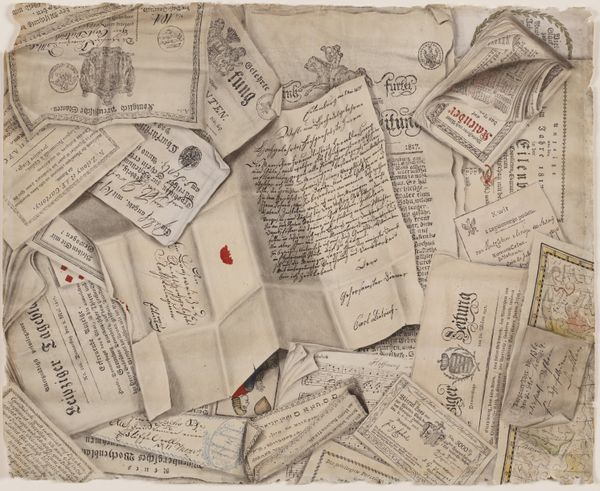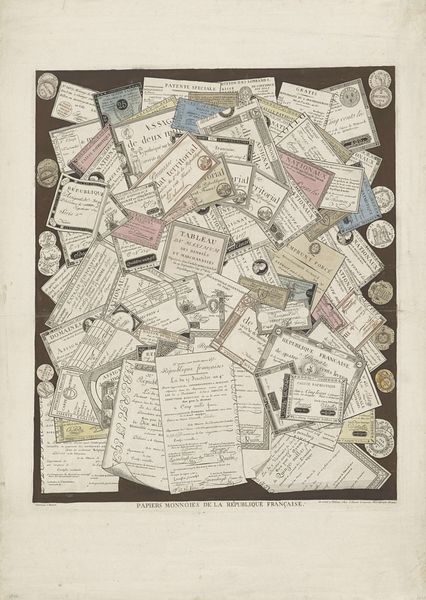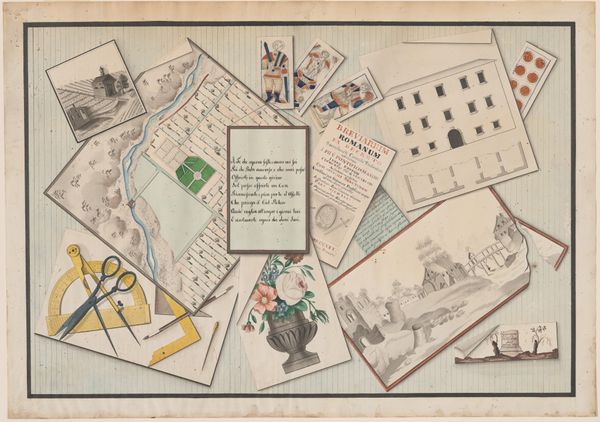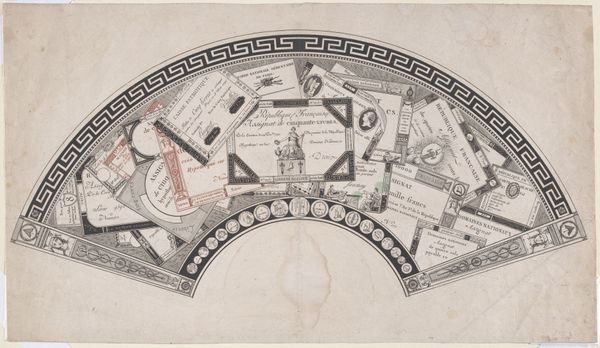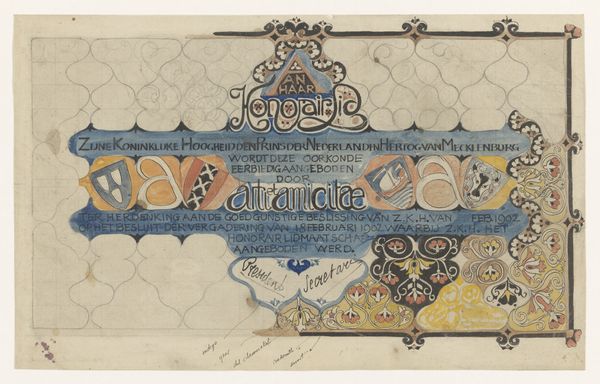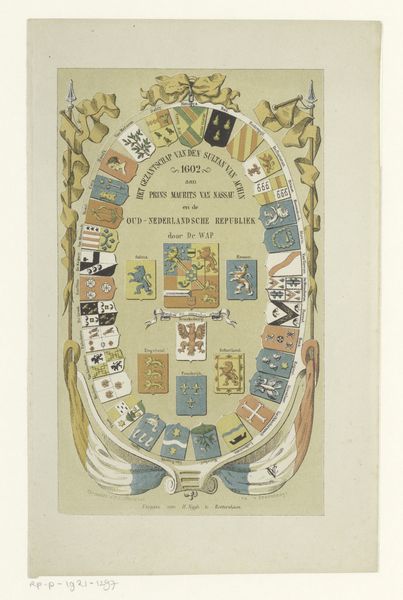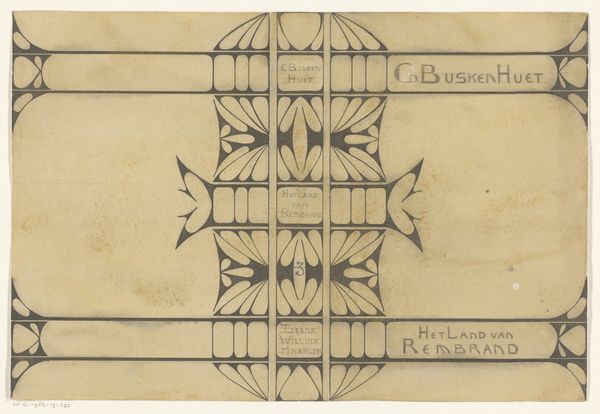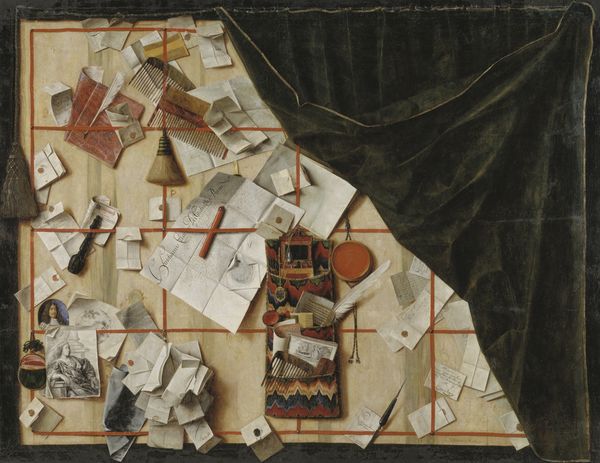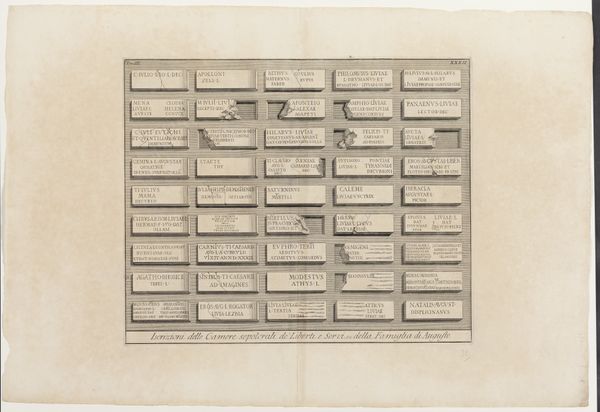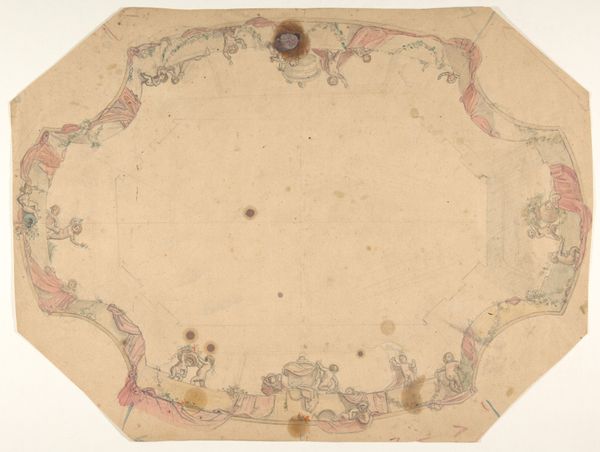
Dimensions: overall: 36.6 x 47.4 cm (14 7/16 x 18 11/16 in.)
Copyright: National Gallery of Art: CC0 1.0
Curator: At first glance, Samuel Lewis's “A Deception,” created around 1780 using watercolor on paper, evokes a sense of fragmented ephemera trapped behind a grid. There's a curious tension. Editor: Yes, an immediate impression of order imposed on chaos. The dark background emphasizes the ephemeral lightness of the paper fragments – invoices, news clippings, theatrical scripts… what holds them captive? And what labor went into rendering each object so faithfully? Curator: The composition’s strength lies in this paradox. The grid, meticulously rendered, dissects and reorganizes the textual components. Note how the lines of the grid interact with the documents, creating new visual relationships and directing our eye across the picture plane. It's a powerful statement about the visual interplay of text and structure. Editor: I see more than just structure, however. These documents give clues to social practices. Lloyd’s Evening Post speaks to emerging forms of media and literacy; "The Distressed Mother," speaks to popular theatrical themes and suggests forms of entertainment in a time of rapid industrial transformation and the growth of cities. I find myself wondering what role these seemingly disposable materials played in shaping personal experiences, maybe anxieties. Curator: An astute point. Semiotically, each fragment is a signifier, and their accumulation hints at an entire cultural landscape. Even the seemingly random overlapping of textures contributes to a dense tapestry of meaning. Editor: True, but it is important to consider what the means of replicating these items means in the late 18th century, how these documents were dispersed, circulated, read and consumed. The question that lingers for me, is how that material reality influences the content we are now examining in purely formal terms? Curator: That interdisciplinary approach is valuable; ultimately, "A Deception" functions as a visual puzzle, challenging us to decode its carefully constructed arrangement of images, while highlighting the aesthetic qualities of paper and pigment, Editor: And maybe in the end it suggests, more profoundly, something of the value society assigned to information— and how that affects not just what they thought but also, simply, what they read.
Comments
No comments
Be the first to comment and join the conversation on the ultimate creative platform.
